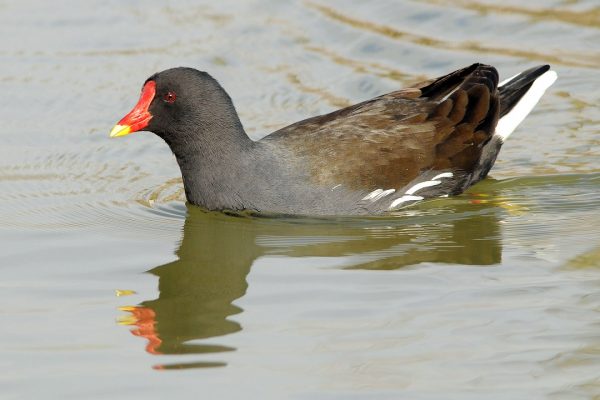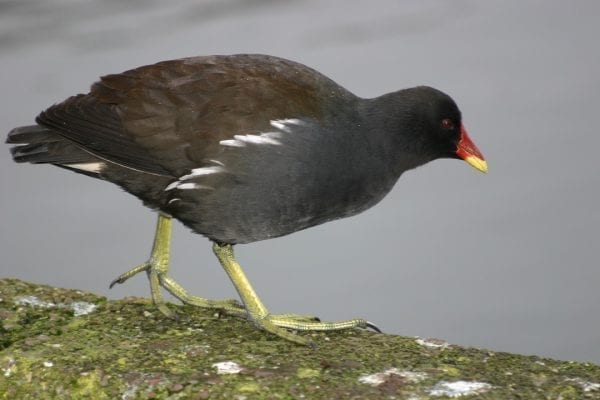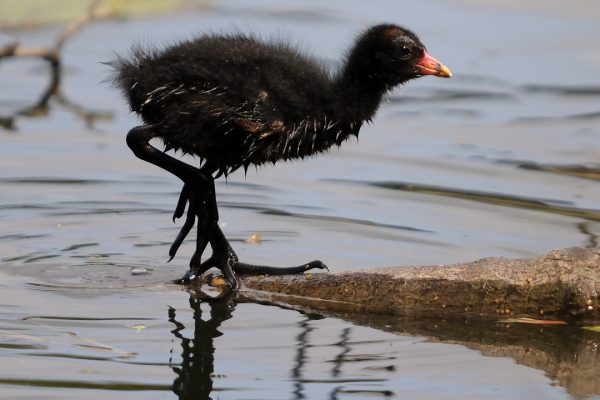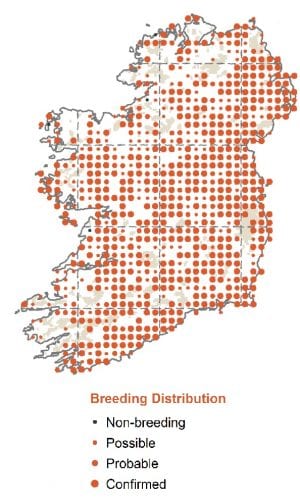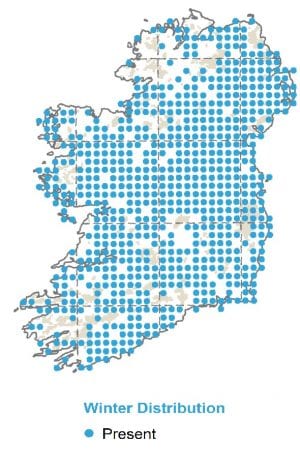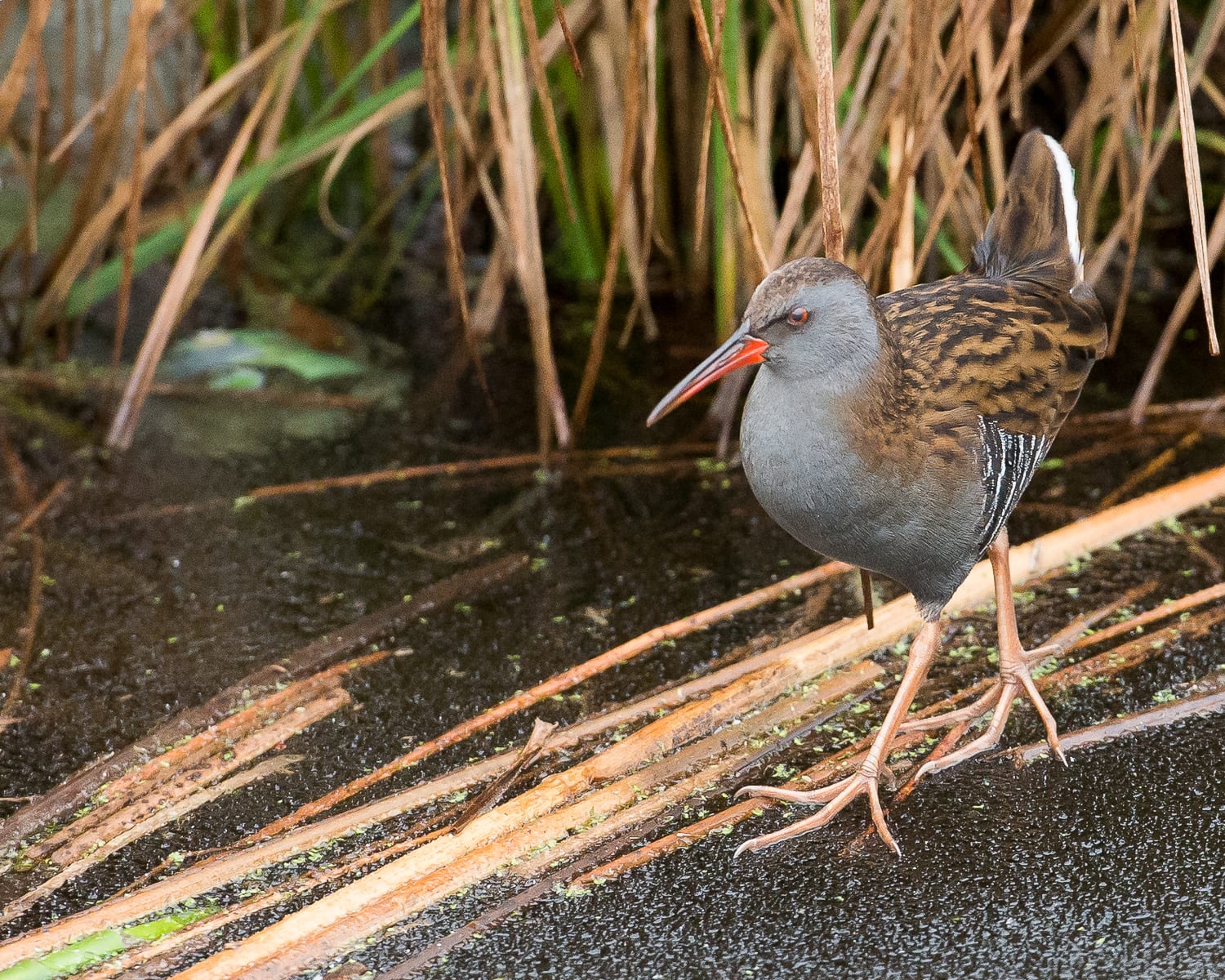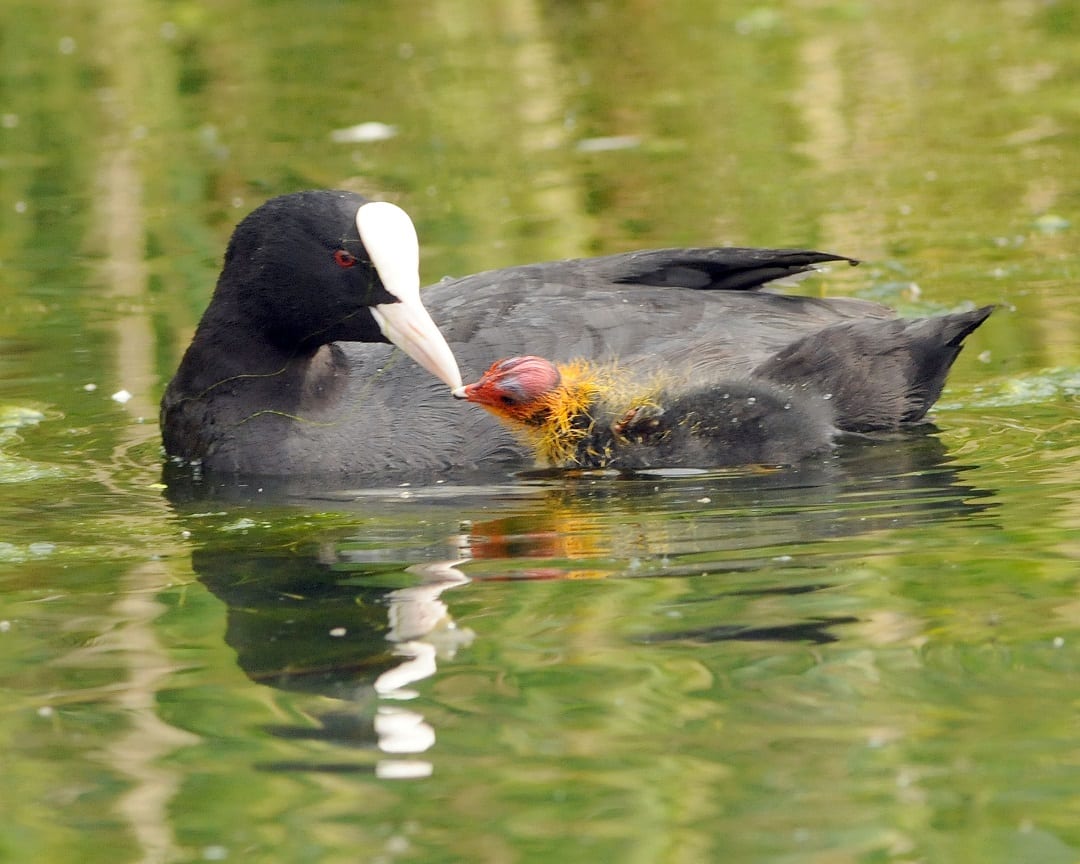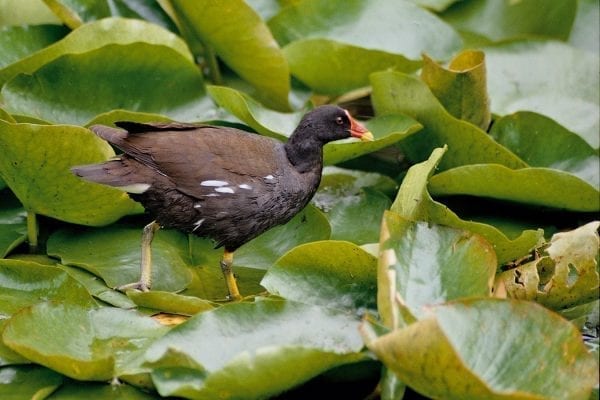
Moorhen
| Irish Name: | Cearc uisce |
| Scientific name: | Gallinula chloropus |
| Bird Family: | Crakes & Rails |
green
Conservation status
Conservation status
Status
Resident, augmented by winter visitors from the continent, particularly the Netherlands and Denmark - September to April.
Identification
Usually quite secretive, but can also be seen out in the open on water sides and even out in open fields. A dark pigeon-sized bird with long sturdy legs. The adult has a red bill and fore crown, the bill is tipped yellow. Has a white line along the flanks and white sides to its under tail. The under tail is east to see as it carries its tail high. The upperparts are brownish and the underparts are blue-grey. Juveniles lack any red in the bill and crown and are have greyish-brown plumage Moorhens are usually seen on the ground or in the water. If the bird is walking about look out for the long yellow/green legs with the very large toes; the legs project out from the tail in flight.
Voice
Common call is short and explosive and given from dense vegetation
Diet
Omnivorous. Feed on both plants and animals. Feeds when swimming but also walks out on to floating plants, muddy ground and out into fields. Only dives rarely. Food includes insects, seeds, fruits, tadpoles and fish. Will also snatch food from other birds.
Breeding
The Moorhen is the most common of our river birds. Nests near water, usually in emergent vegetation or on a floating raft. It is widespread throughout the country, only in parts of the west is it absent or rare. Can be found on any freshwater habitat with abundant emergent vegetation, including town canals, muddy ditches, and large lakes.
Wintering
Winters close to its breeding areas. Birds breeding on upland areas may move down to lower areas in the winter. Irish birds are joined by migrants from colder climates.
Monitored by
Irish Wetland Bird Survey, though underrecorded.

